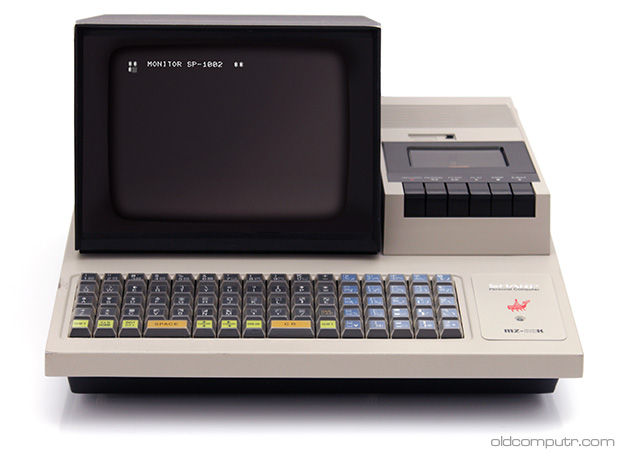
The first personal computer produced by Sharp. I thank my friend Carlo who lets me raid his warehouse where he hides some very significant items.
On the 100th anniversary of its foundation in 1912, Sharp published an interesting pdf that describes the most innovative products and the history of the Company.
In May 1978, the Components Division of the Electronic Components Group introduced the MZ-40K microcomputer kit, and in December, the MZ-80K, an assemble-it-yourself model that ran under BASIC. This was Sharp’s first personal computer.
The statement “ran under BASIC” is a bit a bit misleading though: on boot, the computer doesn’t include any programming language except a simple monitor with a few commands, such as for loading a program from tape (LOAD) or from disk (FD).
So to use BASIC, the most common language in the home computers of the time, you need to load it from disk or tape. Fortunately I got the expansion module and dual floppy drive together with the main unit, with the original Disk BASIC and its manual. Furthermore, always useful, I found the service manuals for all the three items.
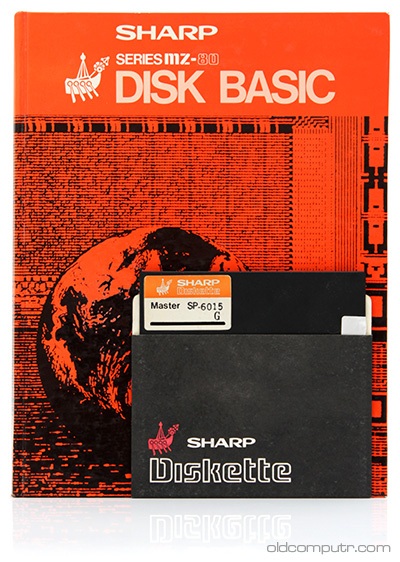
The computer, based on the Z80 processor, was only dirty and didn’t have any problems. The power supply unit doesn’t have a filter capacitor (that usually blows up in a cloud of stinking oily smoke), so I just took it apart to clean it as usual. Here’s the long image that shows all the main parts of the computer:

This is the motherboard:
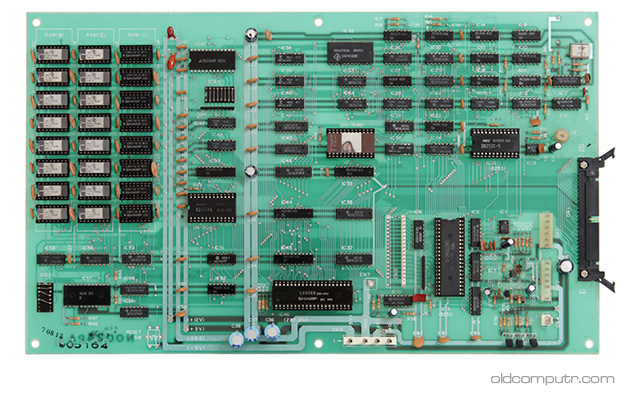
A detail of the monitor after removing 30 years of dust:
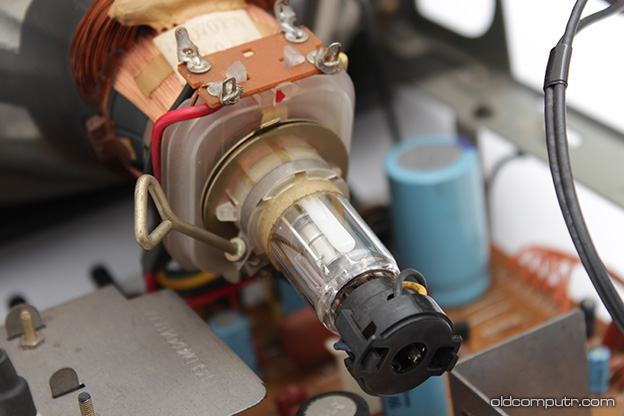
The tape reader mechanics:
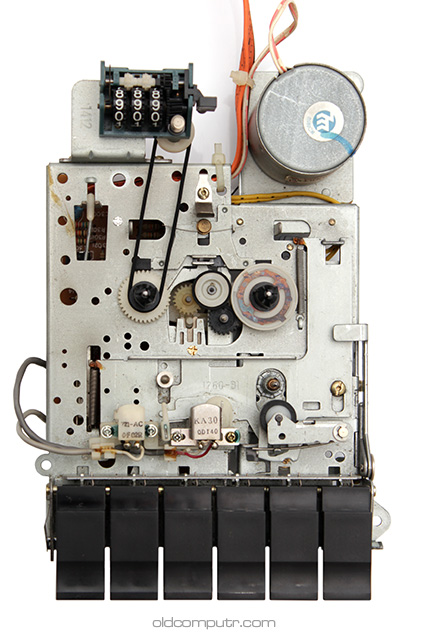
And the power supply unit:
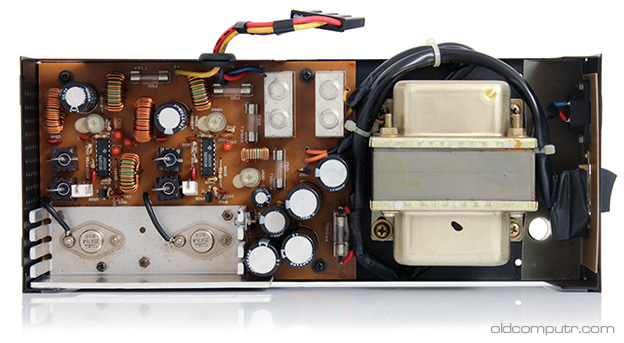
Here are some pictures after reassembling the Sharp MZ-80K:
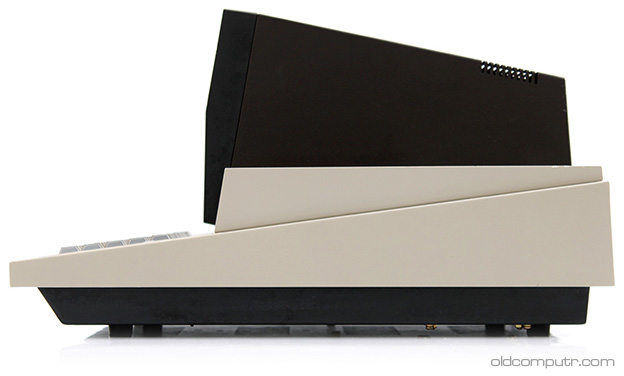
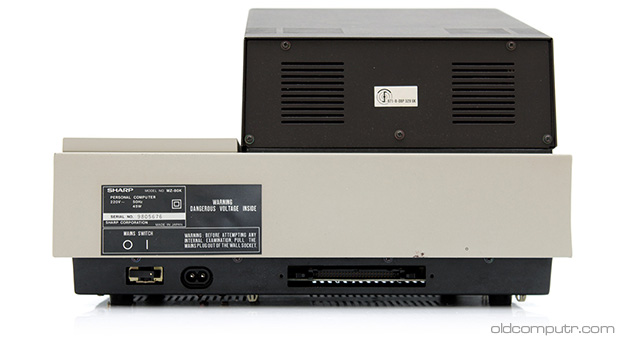
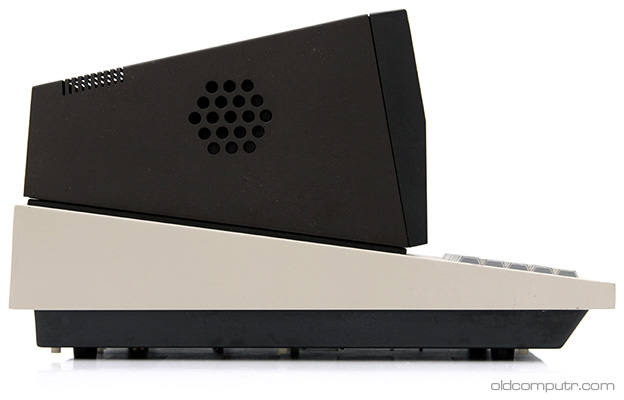
Usually you have to unscrew 4 screws to get to the inside of the computer, that can be “clamshell” opened; but most of the times – and this time is no exception – they are missing.
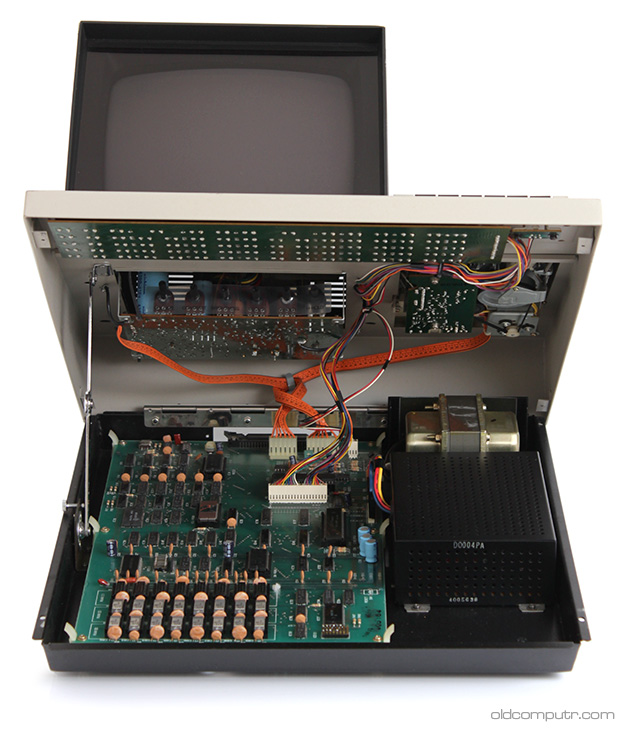
Sharp Interface Unit MZ-80I/O
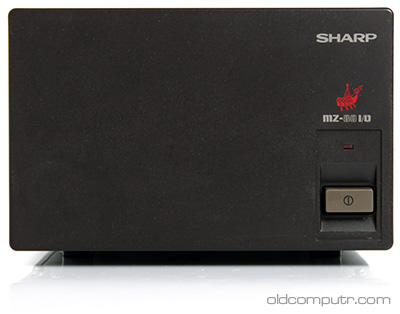
This element is basically an external expansion box, where you can add up to 5 cards. The only card I have is the dual floppy drive controller.
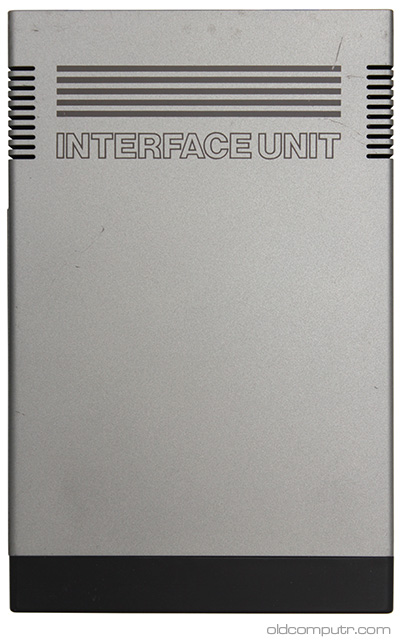
The only intervention was the replacement of the power supply filters, the usual Rifa that crack, dry, and burst after two minutes of usage, tainting all nearby components and filling the room with smoke. Despite my experience I turned on the box, and the filter exploded earlier than usual. At least I was prepared and in less than 10 seconds I unplugged, sealed the room and opened the window :-)

With two shots on a tripod, I created an image showing in transparency the inside of the box. The side door can be opened by unscrewing a couple of screws.
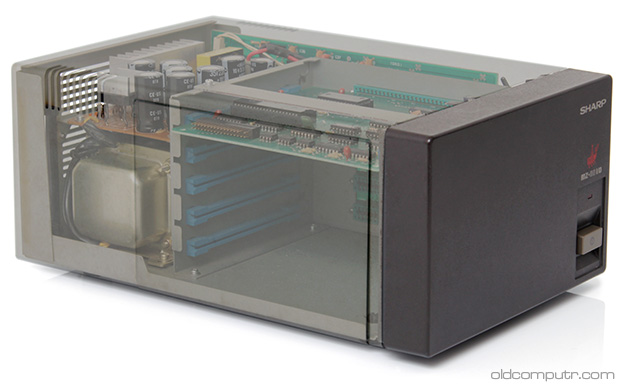
Sharp Floppy Disk MZ-80FD
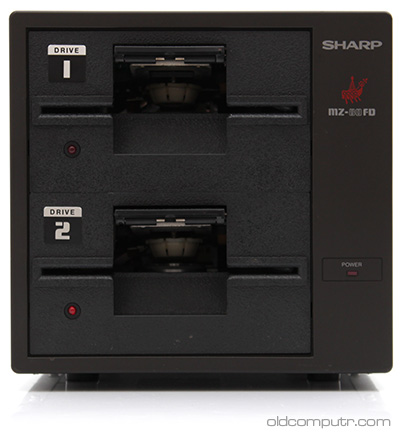
This is the double 5¼-inch floppy unit. As I turned it on I saw a flash of light and heard a popping sound: the fuse just blowed up. I was testing all the items with a friend who, unlike me, is really good at electronics; he searched for a short circuit after the fuse, and his suspects proved right: we unsoldered a few capacitors until we found the shorted one, a small 10µF 35v tantalum capacitor.
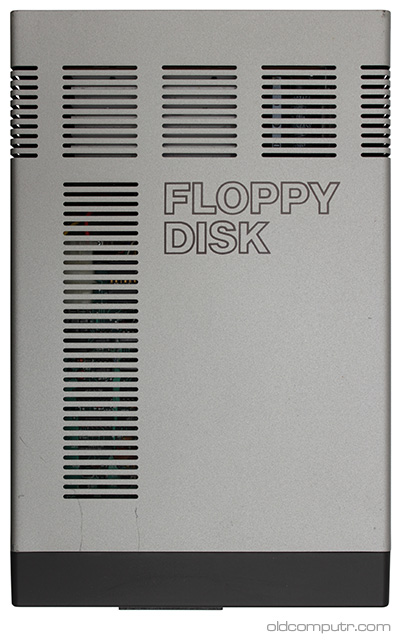
The following morning I went to a local shop and bought some fuses and 5 capacitors. I replaced the shorted one and the fuse, I checked for short circuits, then I turned the unit on. A flash of light, another fuse blown: a second capacitor went off. I replaced all 5 tantalum capacitors, then a couple of power supply filters.
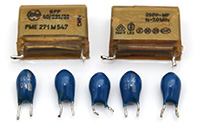
This is the drive logic board:
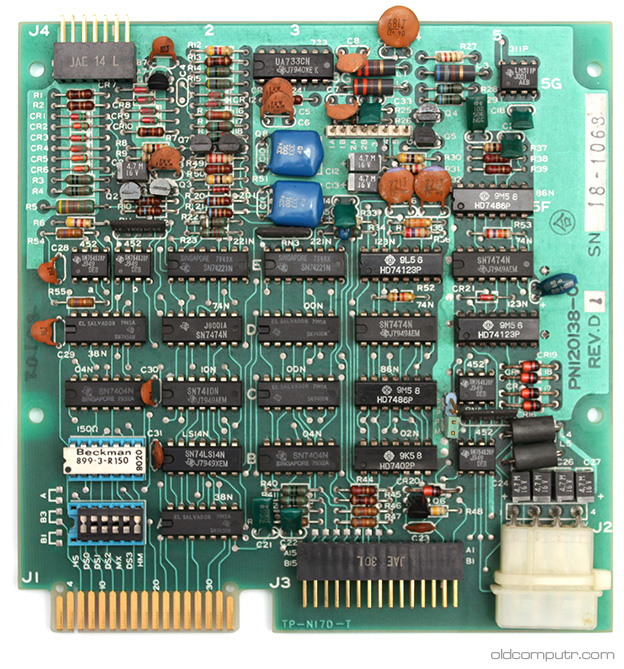
Two pictures of the drives:
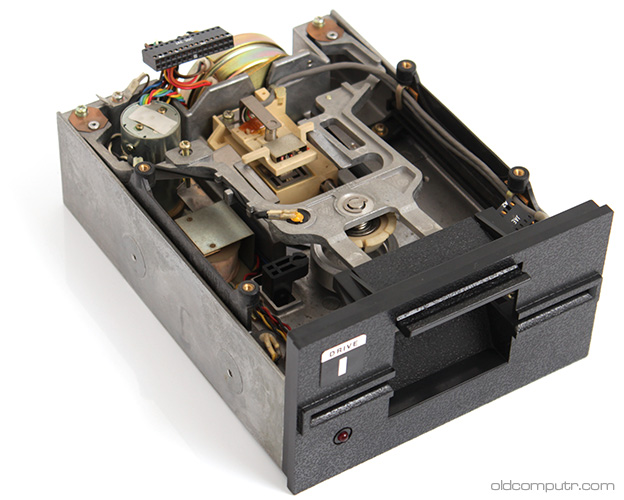
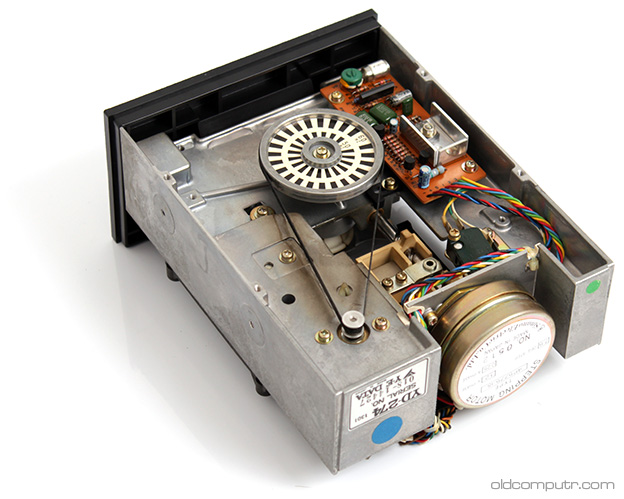
A detail of the stepping motor:
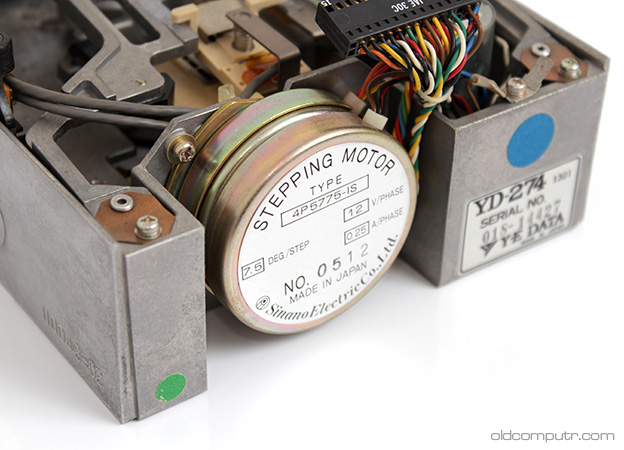
So finally everything was cleaned and repaired and I could hook the drive to the interface unit and then to the computer, load BASIC and write some lines of code. It’s a bit hard to get used to the keyboard. Here it is:
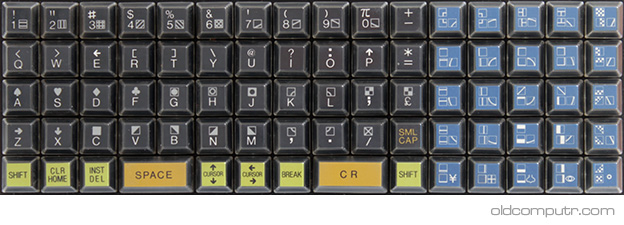
A final picture of the whole system where you can see the BASIC just booted from floppy.
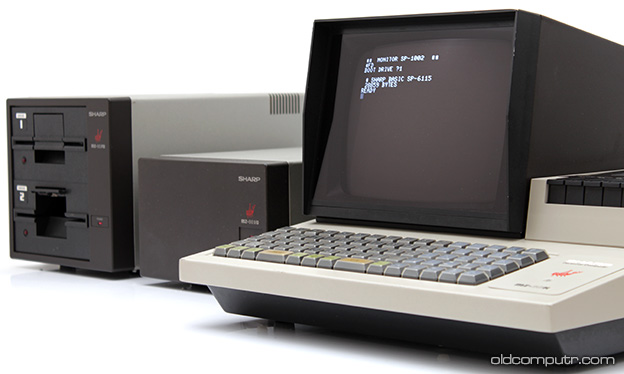
Discover more from Oldcomputr.com
Subscribe to get the latest posts sent to your email.
Hi this is a long shot.
I am trying to obtain an mz80k basic master disk.
Do you have any ideas.
drop me a line with your adress at mentioned email adress, i can deliver
charmanta @ t-online.de
This has just made my day, with a few minutes on memory lane. I had the MZ-80K when I was 14. Learned so much from that machine, including Assembly Language ( it has the Z80A processor).
Naturally, as any 14 year old boy would do, I took it apart to see how it worked. Plus added some little electronic extras like an external volume control, hard reset button and some 4mm banana plug sockets to the PSU, so that I could use the beautifully smooth 5V and 12V supplies.
Those were the days! Cheers!
Brings back some great memories. I cut my teeth on Z80 assembler. Had to buy a 2nd copy of Rodnay Zacks Z80 assembler book (by Sybex) as first was so well used. Still have it somewhere.
Managed to get my hands on a working 80K with drives and Interface unit last year. Just watching EBay for media now.
Would love a copy of ZEN-DOS if any knows where one exists???
Looking for software including basic.
I bought one of these as a young guy, I was at college studying Fortran I only recently found out Fortran was available for this along with basic and probably other languages as well. A real trip down memory lane. I remember my reasoning for getting this model, it was the computer with the biggest memory. The kids don’t know, they have no idea how spoiled they are.
Does anyone know of a link to the user manual?
Many Thanks
Ian
As I recall there really wasn’t much of a manual.. Mine came with a copy of basic. I purchased it for a HNC course I was doing in the evenings. I was studying. Fortran 77. I used to convert my Fortran to basic and run it then take it back to college knowing it would compile OK, I found out a couple of years ago they did Fortran for the mz80k. Well it was an education converting it all. At the time it was a beast the thing to have.
I’m going to root around see if I still have what came with it, you never know.
I recall the manual for BASIC being great, with little cartoon characters explaining some of the concepts of programming. Great memories.
A lot of PDFs can be found here in the Downloads › Manuals section: https://original.sharpmz.org
HELLO!
I have much software and info for the MZ80K!
Àny one whishing to share drop me an email…
Hi Tony, I’d be interested to see your list please.
Thanks.
Hi KEN!
Send me an email using admin and a list of yours!
I’ve accumulated alot 16GB etc…
cheers Tony
Pingback: Sharp MZ-80K – acht Bit aus Fernost | HNF Blog
Hi Giacomo
I recently got a MZ-80K in unknown condition. The case looks used (some spots without colour) bot nothing serious. Opening the case and removing the power supply from the motherboard for a short test about the delivered voltages. This resulted in the crackling noise of a tantalum capacitor inside the power supply. Opening the power supply revealed a blown tantalum and a exploded Rifa on the primary side of the transformator.
I had to fix the -5V rail, using a 7805 (yes the +5V Regulator) since Sharp engineers decided to use a pos. voltage regulator for the -5V rail.
Now the system is running, welcoming me with the “Monitor SP-1002” display. The CRT is pulsing while pressing keys, which make me think about replacing all the caps in the power supply.
I’m looking for the Owners Manual with some more information about the monitor program. Any idea, where I can find a copy?
Hi Peter,
Well done on your repair.
I case Giacomo doesnt see you message, you may find what you’re looking for at https://original.sharpmz.org/
Its a goldmine of old documents.
If you every come across a copy of ZEN-DOS in your travels, please be sure to let me know, thats the one thing I have been unable to locate.
Good luck
Hi Ken
I came along the original.sharpmz.org webpage. I has pictures about those manuals but they are not available for download…
I see what you mean – I was sure thats where I got mine from.
I have a few PDF’s I can send to you.
I have created a temporary email address [email protected]
If you send me your email address, I can send you what I have.